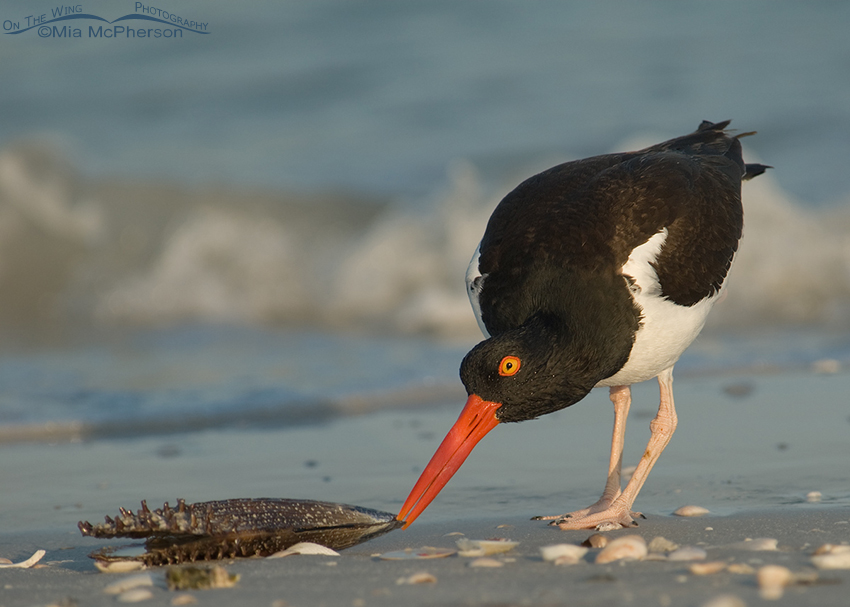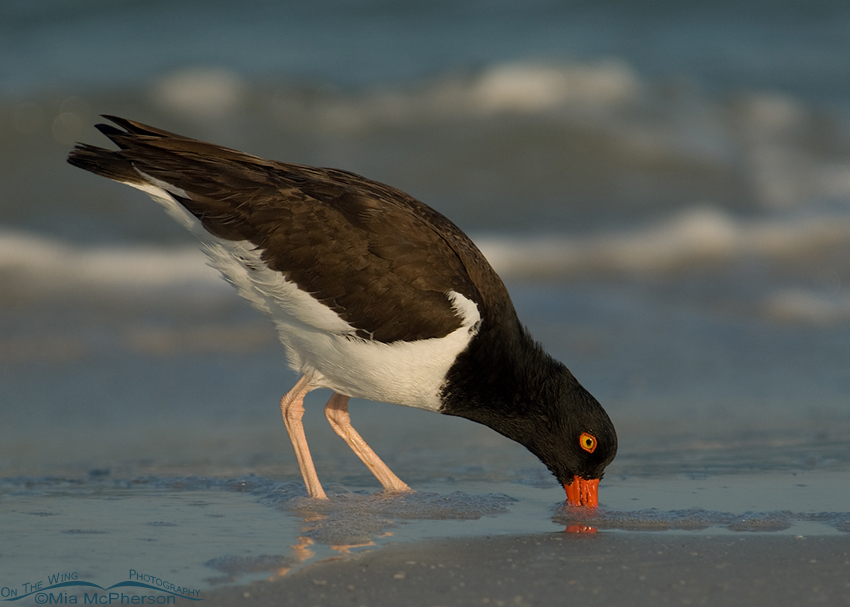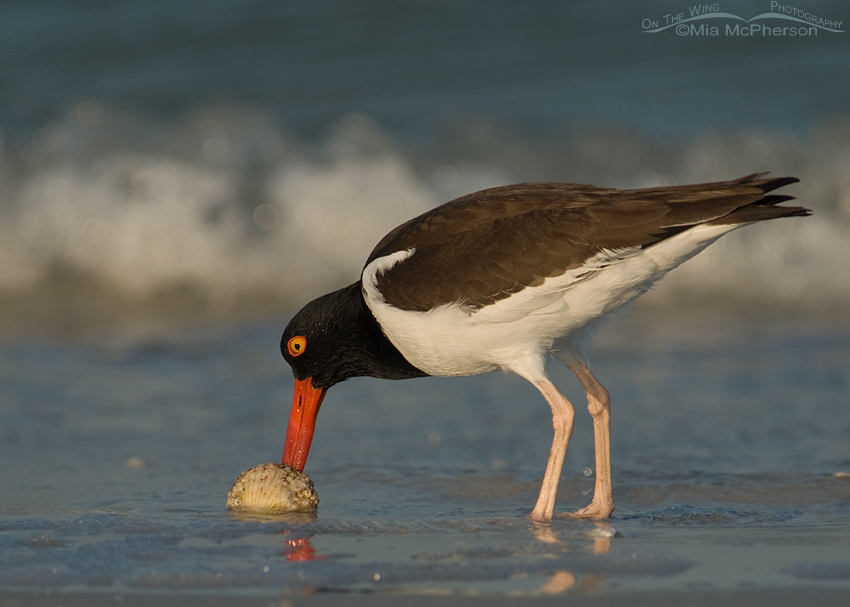I’ve been going through some of my older files and reculling them the past few days. I’ve kept far more images than I should have but I have learned a lot since those photos were taken and have become more discriminating about which files I truly want to keep. When I came across the folder these American Oystercatcher images were in I decided to share a few.
 American Oystercatcher (Haematopus palliatus) with Penn Shell – Nikon D200, handheld, f6.3, 1/500, ISO 200, Nikkor 80-400mm at 400mm, natural light
American Oystercatcher (Haematopus palliatus) with Penn Shell – Nikon D200, handheld, f6.3, 1/500, ISO 200, Nikkor 80-400mm at 400mm, natural light
I came across this Oystercatcher as it was foraging along the shoreline just beyond where the waves break. The Gulf must have been rough during the night because all kinds of shells and turtle grasses had been pushed onto the shore, because the tide was going out the shorebirds had discovered that some of the mollusks were still alive and were poking around looking for something to eat. This bird was tugging on the Penn Shell to see if the meat was still inside.
 American Oystercatcher digging for prey – Nikon D200, handheld, f6.3, 1/750, ISO 200, Nikkor 80-400mm VR at 400mm, natural light
American Oystercatcher digging for prey – Nikon D200, handheld, f6.3, 1/750, ISO 200, Nikkor 80-400mm VR at 400mm, natural light
Some of the Oystercatchers were digging in the sand with their bills searching for prey that might have been covered in the sand. This bird was really getting into it!
 American Oystercatcher prying open a shell – Nikon D200, handheld, f6.3, ISO 200, Nikkor 80-400mm VR at 400mm, natural light
American Oystercatcher prying open a shell – Nikon D200, handheld, f6.3, ISO 200, Nikkor 80-400mm VR at 400mm, natural light
American Oystercatchers use their long, thin bills to pry open the shells of clams, oysters and other bivalves, the one above worked on the Calico Shell for several minutes before a rogue wave washed it back into the Gulf.
I was laying down in the wet sand with my lens about an inch from the surface of the beach when I photographed these shorebirds, one needs to watch out for those rogue waves because they don’t only wash away the bird’s prey… they can soak your lens & camera too! That never happened to me but it always pays to be cautious.
Life is good.
Mia


Wow, Mia. I’m speechless. The eye-level POV combined with the great colors and behaviors make me wish I was there. This is another bird I have yet to see — have only seen Black Oystercatchers. You can tell which areas I have not been photographing in.
Ingrid, I have yet to see and photograph Black Oystercatchers and I think they are gorgeous. You can tell that I haven’t been photographing along the Pacific Coast!
Fantastic! I’ve been curious to visualize the feeding Oystercatchers. It’s truly remarkable to see them pulling the bivalves right up through the sand. Thanks for sharing.
Laurence, it is great fun to watch Oystercatchers prying open shells, their bills are lovely & colorful too! Thank you for commenting.
Glad you decided to share these images; they are incredible! The Oystercatcher is gorgeous and it is interesting to see it in action.
Thanks so much for your comment Tammy.
Between you and Ron, I get to see such exciting images everyday. I love the vivid orange of the bill and the eye. Beautiful images and informative post, too.
Bob, thanks! The eyes and bills of Oystercacthers are in such contrast with the body plumage and I think that is wonderful.